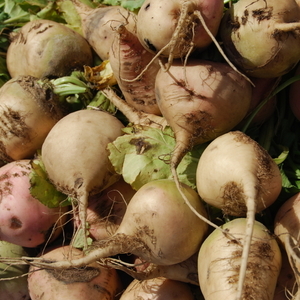New values mean most UK-grown biofuel feedstocks meet GHG targets

March 19, 2013
BY Susanne Retka Schill
With new biofuel regulations taking effect shortly, most growers in the U.K. can relax. New regional values for the greenhouse gas (GHG) emission associated with feedstock cultivation now mean most of the crop production in the U.K. will meet the new targets of the EU Renewable Energy Directive that take effect April 1.
Initially, those GHG targets were met by less than 5 percent of oilseed rape (canola) production in the U.K., none of the sugar beets raised and about 83 percent of the U.K. winter wheat production.
First announced in 2010, a consortium of 14 government agencies, agricultural and renewable fuels associations and biofuel producers worked with the Department for Transport to get the regional values revaluated. The consortium was led by the HGCA – the Home-Grown Cereals Authority, a division of the Agriculture and Horticulture Development Board (analogous to checkoff programs in the U.S.).
Advertisement
Advertisement
The consortium worked to ensure that the data used in the RED regional calculations “was based on the most robust and up-to-date evidence,” the HGCA said in announcing the revised default values. “With input from the consortium, HGCA was able to collate and use improved data for average yields, oil content (oilseed rape), fertilizer use, fuel consumption, soil organic matter and nitrogen content of residues returned to soils.”
The revised figures, which HGCA announced have been accepted by the European Commission now show 97 percent of U.K. production of oilseed rape meets the criteria, 84 percent of winter wheat production and 100 percent of U.K. sugar beet production.
“The great news is that the EC have accepted the revised regional figures and they can be used with immediate effect, thus ending a period of great uncertainty, boosting confidence and potentially adding several million pounds to the value of the UK biofuel supply chain each year,” reported Harley Stoddart, HGCA research and knowledge transfer manager.
“Growers should not be alarmed if their area is in excess of the RED default values, as solutions may still be found. The key is to discuss contracts with buyers and use carbon footprinting tools to help understand what can be done on-farm to reduce GHG emissions,” Stoddart added.
Advertisement
Advertisement
The EU Renewable Energy Directive specifies the default values for the GHG emissions association with the cultivation of oilseed rape must equal or be lower than 29 grams of CO2 equivalent per megajoule of biofuel, 23 g CO2e/MJ for winter wheat biofuel feedstocks and 12 g CO2e/MJ for sugar beets. Values from individual farms or regional figures can be used. The UK regional figures submitted to the EC in 2010 caused concern, the HGCA said, “as many key production areas did not meet the RED default values and it would have restricted access to the biofuels market.”
Related Stories
CoBank’s latest quarterly research report, released July 10, highlights current uncertainty around the implementation of three biofuel policies, RFS RVOs, small refinery exemptions (SREs) and the 45Z clean fuels production tax credit.
The U.S. Energy Information Administration maintained its forecast for 2025 and 2026 biodiesel, renewable diesel and sustainable aviation fuel (SAF) production in its latest Short-Term Energy Outlook, released July 8.
XCF Global Inc. on July 10 shared its strategic plan to invest close to $1 billion in developing a network of SAF production facilities, expanding its U.S. footprint, and advancing its international growth strategy.
U.S. fuel ethanol capacity fell slightly in April, while biodiesel and renewable diesel capacity held steady, according to data released by the U.S. EIA on June 30. Feedstock consumption was down when compared to the previous month.
XCF Global Inc. on July 8 provided a production update on its flagship New Rise Reno facility, underscoring that the plant has successfully produced SAF, renewable diesel, and renewable naphtha during its initial ramp-up.
Upcoming Events










